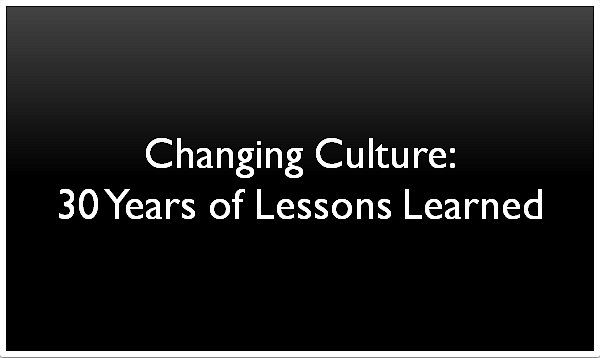The Commitment of Senior Leaders
Puzzle piece missing indicating the common missing factor or any culture change initiative.The single most important factor in determining the success of any culture change initiative is the level of commitment of senior leaders. Without this, culture change will not happen – period. By level of commitment, we mean active involvement, which includes being role models of the expected behaviors and designing the organization to create the conditions to encourage and support these behaviors. In this case, the lack of consistency in leaders’ words and actions undermined the efforts of the business process team.
Ignoring the Power of Personal Values
One of the main reasons people joined the company is due to the high value placed on autonomy, flexibility, responsiveness and personal accountability. This did not apply only to lower level employees. Senior executives and other leaders were hired or promoted because of their ability to get results demonstrating these very qualities.
Enter the new business process initiative. Implicit in its mandate and scope is the message that consistency and compliance (aka efficiency) are more important and more valued than personal accountability, flexibility and responsiveness. In effect, it said to people that the values, qualities and capabilities that had made them successful to date were no longer of value. This is a direct threat at a deeply personal level.
No matter how strong the business case, people are not going to embrace or accept a change that directly conflicts with their personal values, beliefs and experience. Explaining why the change is needed simply is insufficient to shift existing beliefs. In fact, no amount of communication or education would be successful in this situation.
Disconnect Between the Change and Brand
In this company, flexibility, agility and responsiveness are embedded in its brand and customer experience. Any customer, no matter how small, could contact someone at the company knowing they would get a solution tailored to their specific needs. And, they could get it quickly and hassle-free because every employee was empowered to do what was needed to make it happen. This model of flexibility with empowered accountability differentiated the company from its slower, more process-driven competitors leading to its current success and growth.
While the shift to more process made financial sense, it was in direct conflict with the brand values and everything employees believed important to customers.
Disconnect Between the Message and Experience
Acceptance of the change is even less likely when the message is at odds with people’s experience. They are told that processes reduce costs, decrease waste and increase efficiency yet, in many cases, while the process improvements benefit the overall organization, they are detrimental to the performance of their group.
As a result, instead of insisting on compliance with the new processes, leaders in the affected groups allow and even encourage people to do things outside the process. The message? It is okay to ignore the process and continue the old way of doing things. To make things worse, senior leaders turn a blind eye and don’t hold these leaders accountable for compliance. Not only does this undermine the efficacy of the business process initiative, but it also erodes credibility and fosters cynicism and skepticism leading to increased resistance to change.You’ve chosen a terrific way of integrating images and text into your website. Move the image anywhere you want in this container and the text will automatically wrap around it. You can display events team members new products and more easily and creatively. To start add an image from the Image Picker and edit it as you would edit any image in the system. For example you can link the image to existing pages in your site a website URL a popup or an anchor. After you’ve chosen the image add your text. You can add text that describes the image you’ve selected or simply use the image for decorative purposes. \nYou’ve chosen a terrific way of integrating images and text into your website. Move the image anywhere you want in this container and the text will automatically wrap around it. You can display events team members new products more easily and creatively. To start add an image from the Image Picker and edit it as you would edit any image in the system. For example you can link the image to existing pages in your site a website URL a popup or an anchor. After you’ve chosen the image add your text. You can add text that describes the image you’ve selected or simply use the image for decorative purposes.













